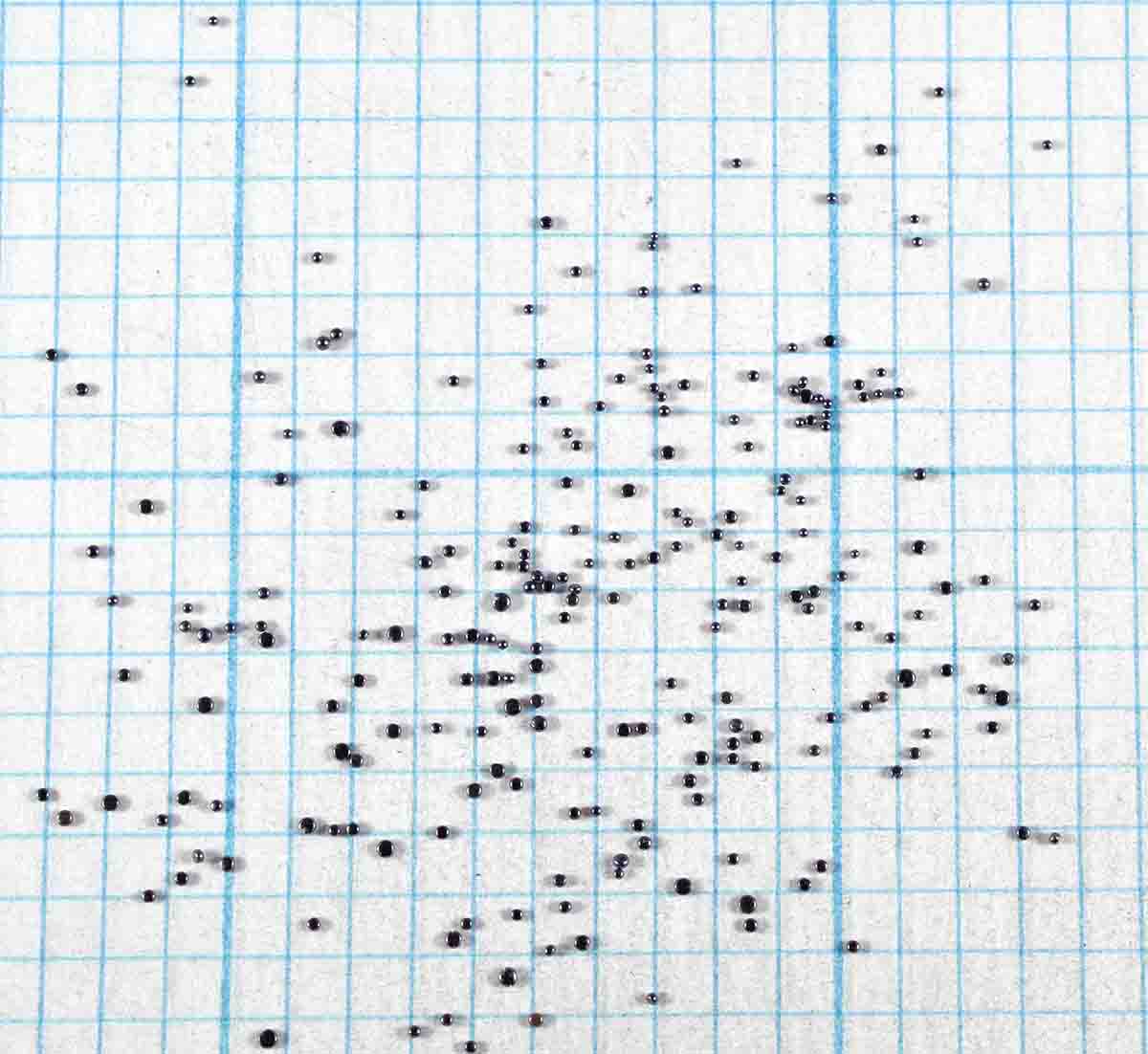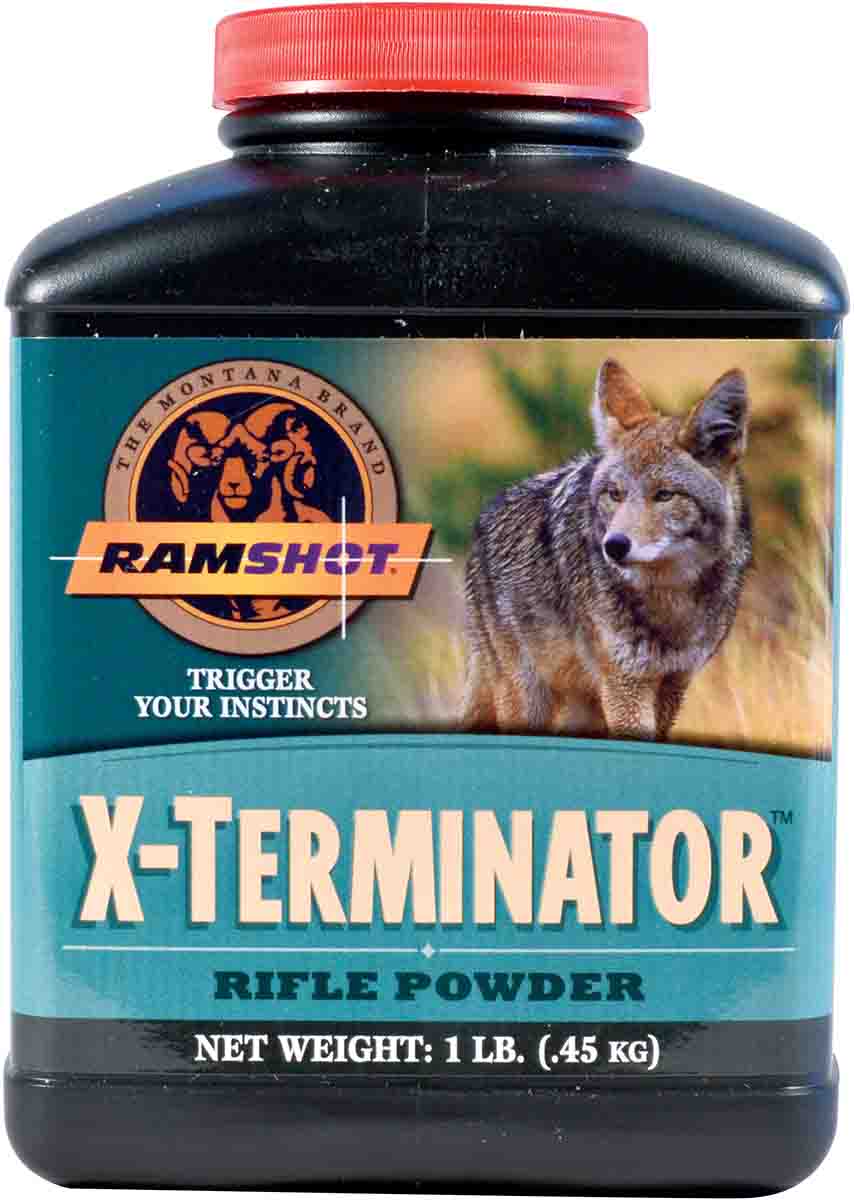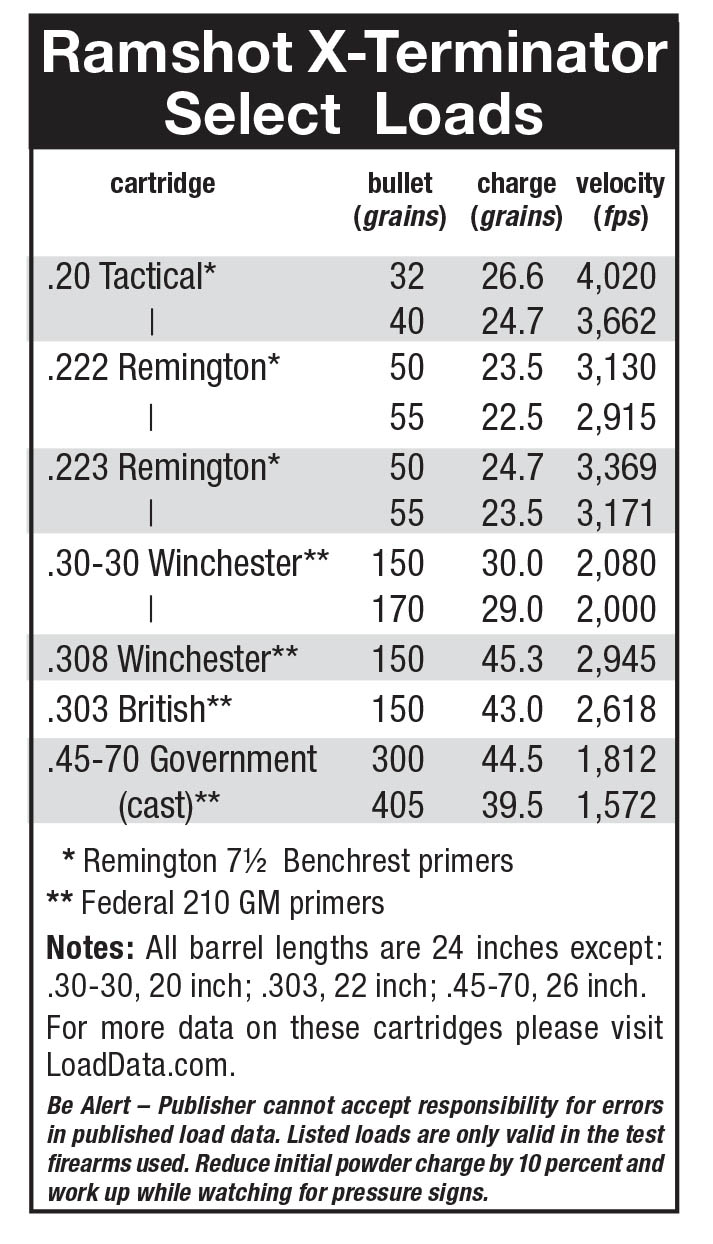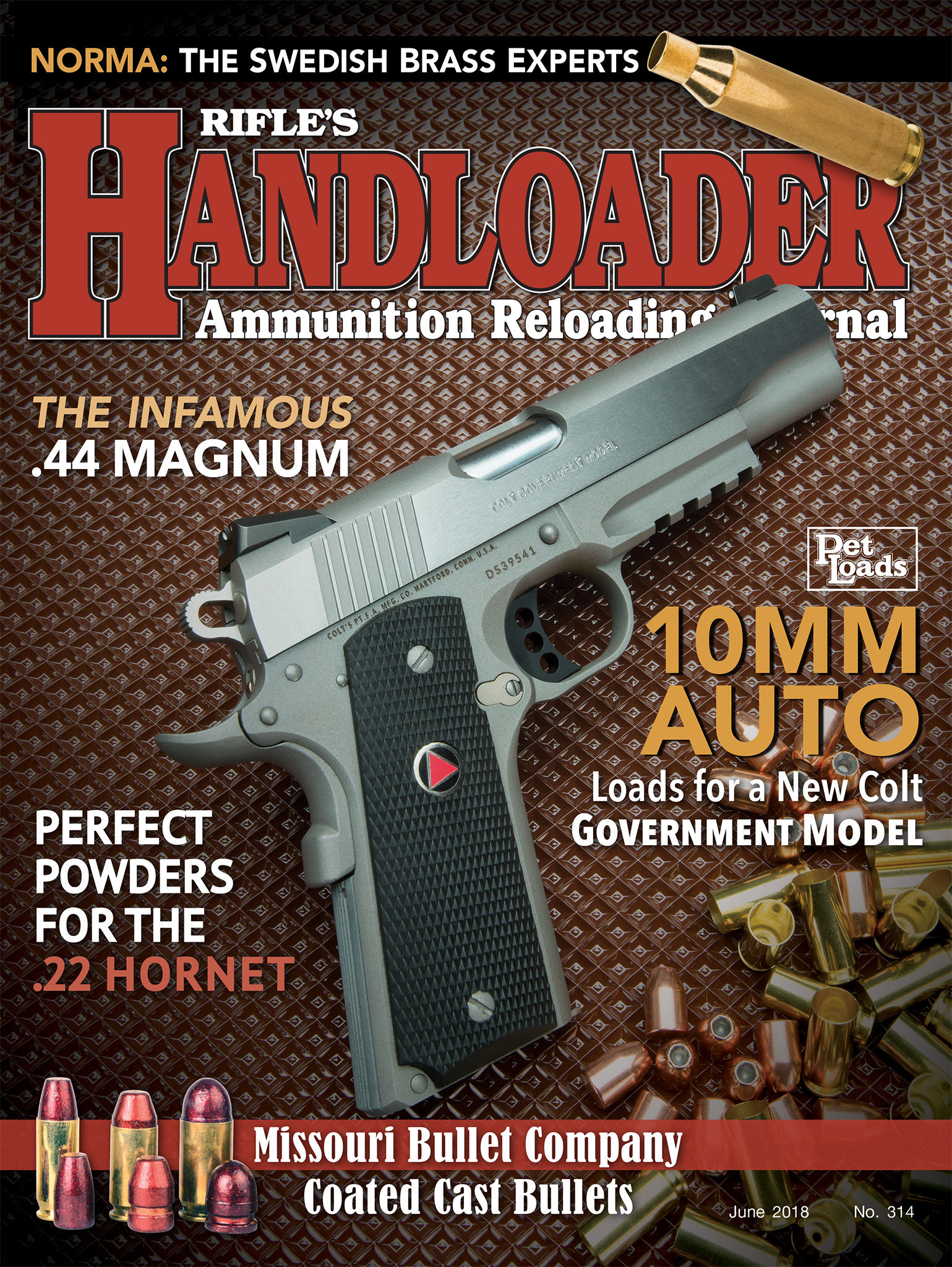Propellant Profiles
Ramshot X-Terminator
column By: R.H. Vandenburg, Jr. | June, 18
A while back, when becoming aware that Western Powders, Inc., of Miles City, Montana, was moving the manufacture of its Accurate line of spherical rifle powders from Belgium back home to the General Dynamics facility at St. Marks, Florida, I requested samples of the new products. To date, St. Marks-made Accurate 2230 and 2520 have been reviewed with 2460 to go. In the same shipment I also received Ramshot X-Terminator, also now made at St. Marks, and three new but unreleased powders. These will also be reviewed in time.
The result of all this is that now all Accurate powders are made in North America. Extruded rifle powders have for some time been manufactured at the General Dynamics plant in Ontario, Canada. All handgun powders

Western’s Ramshot line is mostly still manufactured in Belgium with the exception of X-Terminator, the handgun powder Silhouette and the shotshell powder Competition, all of which are made at St. Marks. Western’s Blackhorn 209 is made at the Ontario plant. Western also imports and distributes Norma powders.
X-Terminator is a double-base powder with a nitroglycerin content averaging 10 percent. Its bulk density is considered to be .985 g/cc. Diameter of the individual granules is about .016 inch. When comparing the old Belgium-made and new St. Marks-made X-Terminator powders, there is a visual difference. The Belgium powder consists of tiny balls; the St. Marks powder is a blend of tiny balls and some that are flattened. It would seem that the blending method would allow for a tighter control of burning rate, and perhaps less powder migration in automated loading equipment. This latter quality may be minor, if it exists at all, owing to the very small size of the individual granules.
A burn rate chart in the new Western Powders’ Handloading Guide, Edition 1 lists powders by manufacturer vertically and includes columns for Accurate, Ramshot, Alliant, Hodgdon, IMR, Winchester, Vihtavuori and Norma. In this presentation, X-Terminator is similar in burn rate to Accurate 2230, Reloder 10-X and Norma 201, but no conclusion regarding powder charge weights may be inferred. In the Ramshot line, X-Terminator is the fastest-burning rifle powder. In the Handloading Guide, following X-Terminator data for a number of cartridges is stated “(Ballistically similar to Accurate 2230 in this cartridge.)” with identical data appearing for each powder.
In going over Western’s data, I found X-Terminator listed for 46 cartridges from the .17 Remington to the .458 Lott. In some instances Accurate 2230 was listed, but X-Terminator could have been used. Out of that list I’ve chosen several for further examination.

As with my previous tests with A-2230 and A-2520, the powder made at St. Marks appears to be slower burning, but not by much; in fact, no more than might be expected from different lots of the same powder. The new powder did give a smaller extreme velocity spread. Specifically, the old lot registered 2,126 fps; the new, 2,080 fps, a difference of 46 fps. Given the small size of the sample, a handloader must not put too much credence in the difference. Discussing the matter with Western’s chief ballistician, he felt the new lots closely mirrored the old.
In the Handloading Guide, the maximum A-2230 powder charge for this combination was 31.0 grains. Winchester cases and primers were used, and data was developed in a 24-inch barrel.
The data for the first cartridge in the accompanying table, the .20 Tactical, was developed for another project but is appropriate for this review. The .222 Remington data – and all the rest – was specifically developed for this column. Both bullet weights in the .222 performed well, but I generally prefer the 50-grain bullet for most varmint hunting. This is still a very accurate cartridge. The .223 Remington used the same bullets as the .222, a Barnes 50-grain VarminA-Tor and a Nosler 55-grain Varmageddon. Both performed well, but

In the .30-30 Winchester, I stayed with the 30-grain charge for the 150-grain bullet though, as noted, the maximum A-2230 charge is listed as 31.0 grains. The 170-grain bullet’s powder charge of 29.0 grains should be considered maximum. Both bullets were the Speer FN. Accuracy was typical for this rifle, iron sights and my eyes. These loads should be ideal in the environment where the .30-30 shines: woods hunting for deer and bear at short to moderate ranges.
With the .308 Winchester, a Hornady 150-grain Spire Point was used, as this is my general purpose, go-to bullet for this cartridge. X-Terminator may be the fastest Ramshot powder suitable for the cartridge and bullet weight. Higher velocity at slightly lower pressure can be obtained with slower powders, but the differences are small.
Another 150-grain bullet was involved in the next test. This time, one of .312 inch in diameter for the .303 British cartridge. Published load data is from a 24-inch barrel. Mine was developed with a Ruger No. 1 with a 22-inch barrel. This turned out to be a good load but, realistically, slower powders are a better choice.
The last test was with the .45-70 in a Marlin Cowboy with a 26-inch barrel. Cast bullets get the most use by me in this cartridge, and I typically keep velocities and pressures near the original black-powder levels. The governing factor here is recoil in a rifle that weighs 7.25 pounds. Modest velocities turn a fire-breathing lion into a pussycat, and it is among my favorite cartridges for simple, fun shooting. Both bullets shown are cast and without a gas check.
Overall, I’m delighted that Western continues to bring so many of its powders back home. It generally means improved lot-to-lot consistency, and availability becomes more of a sure thing.


